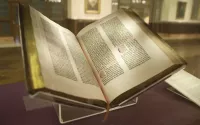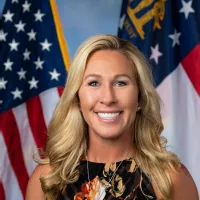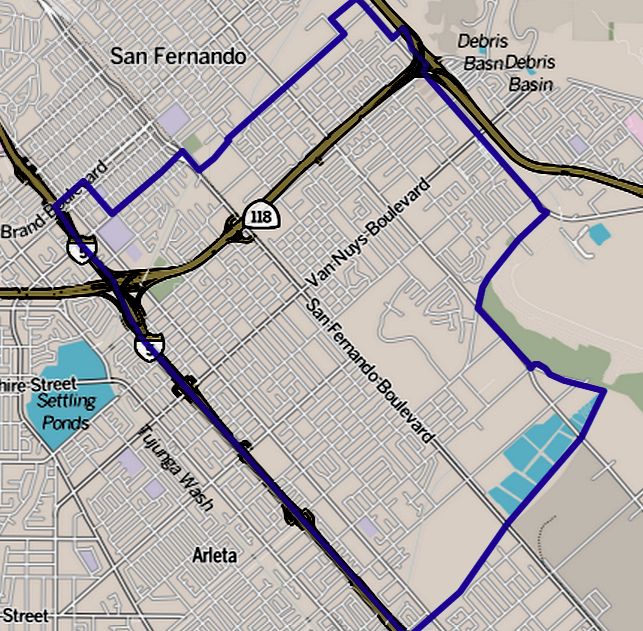Pacoima is a neighborhood located in Los Angeles, California, specifically within the San Fernando Valley region. Notably, it is recognized as one of the oldest neighborhoods in this area.
May 22, 1915: Annexation of Pacoima by Los Angeles
On May 22, 1915, Los Angeles annexed Pacoima as part of ordinance 32192 N.S.
1916: Establishment of Pacoima Chamber of Farmers
In 1916, the Pacoima Chamber of Commerce was established as the Pacoima Chamber of Farmers. The fertile soil produced abundant crops of olives, peaches, apricots, oranges and lemons. The opening of the Los Angeles Aqueduct brought a new water supply to the area. With the new water supply, the number of orchards, farms and poultry ranches greatly increased and thoroughbred horses began to be raised.
June 1, 1950: Pacoima Recreation Center Opening
On June 1, 1950, the Pacoima Recreation Center originally opened. It was later rededicated and renamed.
1950: Property Value Increase
Between 1950 and 1955, property values on Van Nuys Boulevard increased six times.
1952: Slum Clearance Project
In late 1952, the Los Angeles City Council authorized the Building and Safety Department to initiate a slum clearance project, aimed at compelling homeowners with substandard houses to repair, demolish, or vacate them.
November 1953: Establishment of San Fernando Valley Commercial & Savings Bank
In November 1953, businessmen established the San Fernando Valley Commercial & Savings Bank to finance rehabilitation projects in the area, after other banks had refused to provide loans for such projects.
1955: Characterization of Pacoima Residents
In 1955, Ed Meagher described the low-income families of Pacoima as hardworking and having a stake in the community. Also in 1955, P.M. Gomez stated that homeowners were not interested in moving to San Fernando Gardens.
1955: Description of Pacoima and Slum Clearance Project
In 1955, Pacoima was described as an area with substandard housing and lacking basic infrastructure such as curbs, paved sidewalks, and paved streets. Ed Meagher of the Los Angeles Times reported on these conditions. Around 1955, residential property values increased. Also, in 1955, P.M. Gomez stated that homeowners were not interested in moving to San Fernando Gardens. He also stated that most of the homeowners wanted to remain homeowners.
January 31, 1957: Douglas DC-7B Crash into Pacoima Middle School
On January 31, 1957, a Douglas DC-7B operated by Douglas Aircraft Company crashed into the schoolyard of Pacoima Middle School after a mid-air collision.
June 10, 1957: Light Aircraft Crash into a House
On June 10, 1957, a light aircraft crashed into a house in Pacoima, resulting in the deaths of all four passengers on board and injuries to eight people in the house.
1958: Negotiations for Pacoima Library Site
In 1958, the City of Los Angeles began negotiations to purchase a site for a library in Pacoima.
May 1960: City to Ask for Bids for Library Construction
In May 1960, the city was scheduled to ask for bids for the construction of the library in Pacoima.
1960: Concentration of African Americans in Pacoima and Arleta
By 1960, nearly all of the 10,000 African Americans in the San Fernando Valley lived in Pacoima and Arleta, making it the center of African-American life in the Valley.
August 23, 1961: Pacoima Library Opens
On August 23, 1961, the Pacoima Library opened as part of a larger library expansion program.
1962: Hansen Dam Municipal Golf Course Opens
In 1962, the Hansen Dam Municipal Golf Course opened as an addition to the Hansen Dam Recreation Area.
1966: Criticism of Pacoima's Civic Image
A 1966 city planning report criticized Pacoima for lacking civic pride and a vital community image.
1966: City Planners' Report on Pacoima's Deficiencies
In 1966, Los Angeles city planners authored a report indicating that Pacoima lacked a coherent business development structure, suffered from a lack of civic pride, and demonstrated poor house maintenance.
1966: City Planning Report Description of Pacoima
In late 1966, a city planning report described Pacoima's central business district along Van Nuys Boulevard as a strip pattern of commercial uses, including banks, hamburger stands, and small businesses, while noting the "depressing" physical image of the area. The council recommended establishing smaller community shopping centers. The report also cited a lack of parking, storefront disrepair, and residential neglect, recommending improvements to sidewalks, trees, and the establishment of a community center.
1974: Clubhouse added to Hansen Dam Municipal Golf Course
In 1974, a clubhouse was added to the Hansen Dam Municipal Golf Course.
1978: Pacoima Residents Protest Library Service Decreases
In 1978, Pacoima residents protested after the City of Los Angeles decreased library services in Pacoima following Proposition 13.
June 1, 1990: David M. Gonzales Recreation Center Rededication
On June 1, 1990, the Pacoima Recreation Center was rededicated as the David M. Gonzales Recreation Center with a plaque to honor David M. Gonzales, a WWII soldier who died in the Battle of Luzon.
1990: Demographic Shift in Pacoima
According to the 1990 U.S. Census, 71% of Pacoima's population was of Hispanic/Latino descent, while 10% was African American.
1990: Pacoima Unemployment Rate
In the 1990 U.S. Census the unemployment rate in Pacoima was almost 14%.
1991: Census Data on Education
In 1991, the United States Census Bureau started gathering data on the percentage of Pacoima residents aged 25 and older who had obtained a four-year degree or higher, showing lower percentages compared to Los Angeles City and Los Angeles County residents.
1992: Closure of General Motors Plant
General Motors closed its Van Nuys plant in 1992, causing the loss of 2,600 jobs.
1994: Economic Impact of Factory Closures
By 1994, Many Pacoima residents were employed at area factories. In 1994 Timothy Williams reported that Lockheed cut over 8,000 jobs at its Burbank plant from 1990-1994. Many longtime Pacoima residents left the area after job losses.
1994: Economic Struggles and Federal Aid Advocacy
By 1994, Pacoima was the poorest area in the San Fernando Valley due to factory closings and job losses, despite appearing well-maintained. In 1994, Howard Berman and Richard Alarcon advocated including a 2 sq mi area (5.2 km) in Pacoima for a federal empowerment zone.
1994: Community Involvement and Crime Reduction
In 1994, Officer Minor Jimenez credited community involvement for the decrease in crime in Pacoima. Residents cooperated with the police. This resulted in a 6% reduction in major crime. There was also an agreement with liquor store owners to erase graffiti and stop selling individual cold containers of beer. Resident meetings with gang members resulted in a 143-day period without drive-by shootings.
1994: Community Pride and Shifting Demographics
In 1994, Pacoima was noted by Timothy Williams of the Los Angeles Times for lacking overt blight, with community pride noted by Cecila Costas of Maclay Middle School. By 1994, relations between African-American and Hispanic populations had improved as the town became increasingly Latino.
1994: Description of Pacoima's Commercial Strip and Housing
In 1994, Pacoima's main commercial strip on Van Nuys Boulevard had few boarded-up storefronts and no vacancies in the main shopping center, but consisted of check-cashing outlets, storefront churches, pawn shops, and auto repair shops. Nearly one-third of Pacoima's residents lived in public housing complexes, while others waited in garages and sheds.
1994: Paxton Park Renamed Ritchie Valens Park
In 1994, Richard Alarcon proposed renaming Paxton Park to Ritchie Valens Park to honor Ritchie Valens and the Ritchie Valens Fest festival was created in 1994 to honor the renaming of the park.
1994: Homework Center Opens in Library
In 1994, the Homework Center opened in the Pacoima Library.
1996: Founding of Juicy Couture
In 1996, the apparel company Juicy Couture was founded in Pacoima.
1998: Need for New Library Expressed
In 1998, Angelica Hurtado-Garcia stated that the community had outgrown the current Pacoima library branch and needed a new one and a committee recommended spending funds to develop plans to build a new branch.
2000: Most Common Ancestries and Birthplaces
According to Mapping L.A., in 2000, the most common ancestries in Pacoima were Mexican and German. Mexico and El Salvador were the most common foreign places of birth.
2000: Groundbreaking for New Pacoima Branch Library
In 2000, the groundbreaking for the new 10,500 sq ft Pacoima Branch Library, which was scheduled to have a collection of 58,000 books and videos, was held.
2000: Pacoima Library Book Collection
In 2000, the previous Pacoima Library had around 50,300 books and 5,511 sq ft of space.
2002: New Pacoima Branch Library Opens
In 2002, the new Pacoima Branch Library opened.
2006: New Library More Inviting
In 2006, Hurtado said that the new Pacoima library was "more attractive and inviting to the community" than the previous one.
2008: Population Estimate
In 2008, the city estimated Pacoima's population to be 81,318, with a density of approximately 10,510 people per square mile.
2010: U.S. Census Data
The 2010 U.S. census counted 103,689 residents in Pacoima's 91331 ZIP Code. The median age was 29.5, and the median yearly household income at that time was $49,842.
2020: Census Data on Education
By 2020, data from the United States Census Bureau showed the percentage of Pacoima residents aged 25 and older who had obtained a four-year degree or higher is generally lower than the percentage of Los Angeles City and Los Angeles County residents. Data was gathered from 1991-2020.
2031: Opening of East San Fernando Valley Light Rail Transit Project
In 2031, Metro is scheduled to open the East San Fernando Valley Light Rail Transit Project, featuring three stations in Pacoima.
Mentioned in this timeline
The United States of America is a federal republic located...
World War II - was a global conflict between the...

Los Angeles is the most populous city in California and...
El Salvador officially the Republic of El Salvador is a...

Books are a means of storing information as text or...
Mexico officially the United Mexican States is a North American...
Trending

17 days ago Erika Kirk rejects Kimmel's apology, faces accusations, and lands endorsement amid controversy.

4 months ago Greg Gutfeld Faces Backlash after Controversial 'Nazi' Remark on Fox News.

Lane Kiffin is an American football coach currently serving as the head coach at Ole Miss He has a notable...
55 minutes ago Robert Wagner faces scrutiny amid calls for 'deathbed confession' regarding Natalie Wood's death.

19 days ago Travis Etienne's Week 9 Fantasy Outlook: Start or Sit Him Against the Raiders?
Kenneth Walker III is a professional American football running back currently playing for the Seattle Seahawks in the NFL He...
Popular

XXXTentacion born Jahseh Dwayne Ricardo Onfroy was a controversial yet...

William Franklin Graham III commonly known as Franklin Graham is...

Cristiano Ronaldo often nicknamed CR is a Portuguese professional footballer...

Candace Owens is an American conservative political commentator and author...

Michelle Obama is an American attorney author and former First...

Marjorie Taylor Greene known as MTG is a far-right American...
